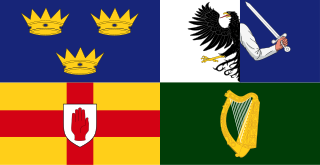 W
WThe culture of Ireland includes language, literature, music, art, folklore, cuisine, and sport associated with Ireland and the Irish people. For most of its recorded history, Irish culture has been primarily Gaelic. It has also been influenced by Anglo-Norman, English and Scottish culture. The Anglo-Normans invaded Ireland in the 12th century, and the 16th/17th century conquest and colonisation of Ireland saw the emergence of Tudor English culture repurposed in an Irish style. The Plantation of Ulster also introduced Scottish elements mostly confined to Northern Ireland.
 W
WAll-Ireland refers to all of Ireland, as opposed to the separate jurisdictions of the Republic of Ireland or Northern Ireland. "All-Ireland" is most frequently used to refer to sporting teams or events for the entire island, but also has related meanings in politics and religion.
 W
WThe Aran jumper is a style of jumper that takes its name from the Aran Islands off the west coast of Ireland. A traditional Aran Jumper usually is off-white in colour, with cable patterns on the body and sleeves. Originally the jumpers were knitted using unscoured wool that retained its natural oils (lanolin) which made the garments water-resistant and meant they remained wearable even when wet.
 W
WIt is unclear whether a form of Early Irish astrology existed prior to contact with Western astrology, as the earliest Irish language sources are simply translations from standard Western sources. Historian Peter Berresford Ellis argues that although there is evidence of the development of Irish astrology from the 7th Century AD onwards, anything earlier is left to conjecture based on continental Celtic artifacts like the Coligny calendar.
 W
WBeltane is the Gaelic May Day festival. Most commonly it is held on 1 May, or about halfway between the spring equinox and summer solstice. Historically, it was widely observed throughout Ireland, Scotland, and the Isle of Man. In Irish the name for the festival day is Lá Bealtaine, in Scottish Gaelic Latha Bealltainn and in Manx Gaelic Laa Boaltinn/Boaldyn. It is one of the four Gaelic seasonal festivals—along with Samhain, Imbolc and Lughnasadh—and is similar to the Welsh Calan Mai.
 W
WBrigid's cross or Brigit's cross is a small cross usually woven from rushes. Typically it has four arms tied at the ends and a woven square in the middle. Historically, there were also three-armed versions.
 W
WThe Irish Catholic Church, or Catholic Church in Ireland, is part of the worldwide Catholic Church in communion with the Holy See. With 3.7 million members, it is the largest Christian church in Ireland. In the Republic of Ireland's 2016 census, 78% of the population identified as Catholic, which represents a decrease of 6% from 2011. By contrast, 41% of Northern Ireland identified as Catholic at the 2011 census, a percentage that is expected to increase in the coming years. The Primate of All Ireland is the Archbishop of Armagh. The Primate of Ireland is the Archbishop of Dublin. The church is administered on an all-Ireland basis. The Irish Catholic Bishops' Conference is a consultative body for ordinaries in Ireland.
 W
WA cèilidh or céilí is a traditional Scottish or Irish social gathering. In its most basic form, it simply means a social visit. In contemporary usage, it usually involves dancing and playing Gaelic folk music, either at a house party or a larger concert at a social hall or other community gathering place.
 W
WThe Celtic and Irish Cultural Society promotes and supports awareness of Irish and Celtic culture in Crawley, West Sussex and throughout the southeast of England.
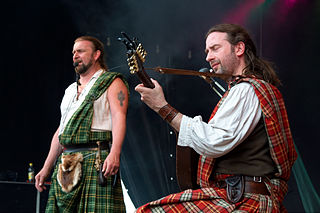 W
WCeltic music is a broad grouping of music genres that evolved out of the folk music traditions of the Celtic people of Western Europe. It refers to both orally-transmitted traditional music and recorded music and the styles vary considerably to include everything from "trad" (traditional) music to a wide range of hybrids.
 W
WChamber Choir Ireland, formerly known as the National Chamber Choir of Ireland, is the Republic of Ireland's national choral ensemble and national chamber choir, and the only regularly funded professional choir in the country. Primarily funded by the Arts Council of Ireland, the choir is the resident ensemble at the National Concert Hall and Affiliated Artists to Dublin City University. Paul Hillier, has been the choir's Artistic Director since 2008.
 W
WThe Claddagh ring is a traditional Irish ring which represents love, loyalty, and friendship.
 W
WThe clothing culture of Ireland is an interesting aspect of the country. Irish clothes are generally very well-made and have a long history of significance attached to them. Aran jumpers were invented in the early 20th century, and are not a historical part of Irish culture. There is no such thing as a Clan Aran. Irish Tweed is a woven fabric incorporating mutli-coloured neps - scraps of wool said originally to have been swept from the floor under the looms at the end of the day, and incorporated into the next day's weaving. In the past, much weaving was done in the home, with the fabric being delivered to a broker. Today, a few mills exist around Ireland which re-create this tweed in the traditional manner. Donegal is the heartland of Irish tweed and Donegal tweed is better known than other Irish tweeds.
 W
WThe coat of arms of Ireland is blazoned as Azure a harp Or, stringed Argent. These arms have long been Ireland's heraldic emblem. References to them as being the arms of the king of Ireland can be found as early as the 13th century. These arms were adopted by Henry VIII of England when he ended the period of Lordship of Ireland and declared Ireland to be a kingdom again in 1541. When the crowns of England, Scotland and Ireland were united in 1603, they were integrated into the unified royal coat of arms of kingdoms of England, Scotland and Ireland. The harp was adopted as the emblem of the Irish Free State when it separated from the United Kingdom in 1922. They were registered as the arms of Ireland with the Chief Herald of Ireland on 9 November 1945.
 W
WA culm bomb is a compressed ball of culm mixed with yellow clay as a binding agent. For roughly 400 years, culm bombs were used in Irish industry and for domestic use around the major coal mining areas of Ireland.
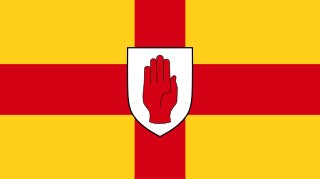 W
WUlster is one of the four provinces of Ireland. Due to large-scale plantations of people from Scotland and England during the 17th and 18th centuries, as well as decades of conflict in the 20th, Ulster has a unique culture, quite different from the rest of Ireland. As all of Northern Ireland lies within Ulster and comprises about 90% of its population, the culture of Northern Ireland is very similar to that of the whole of Ulster.
 W
WA currach is a type of Irish boat with a wooden frame, over which animal skins or hides were once stretched, though now canvas is more usual. It is sometimes anglicised as "curragh".
 W
WDaltaí na Gaeilge is an organization that operates Irish language immersion programs in the American states of New York, New Jersey and Pennsylvania. It also serves as a resource for Irish language students from across the English-speaking world to connect with qualified instructors.
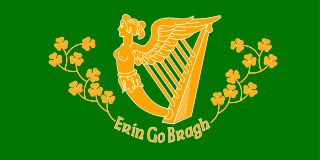 W
WErin go Bragh, sometimes Erin go Braugh, is the anglicisation of an Irish language phrase, Éirinn go Brách, and is used to express allegiance to Ireland. It is most often translated as "Ireland Forever."
 W
WFáinne is the name of a pin badge worn to show fluency in, or a willingness to speak, the Irish Language.
 W
WIrish traditional music is a genre of folk music that developed in Ireland.
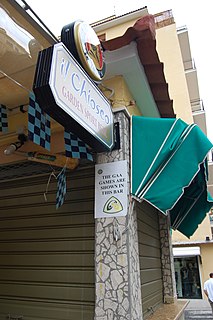 W
WGaelic games are sports played in Ireland under the auspices of the Gaelic Athletic Association (GAA). They include Gaelic football, hurling, Gaelic handball and rounders. Women's versions of hurling and football are also played: camogie, organised by the Camogie Association of Ireland, and ladies' Gaelic football, organised by the Ladies' Gaelic Football Association. While women's versions are not organised by the GAA, they are closely associated with it.
 W
WGaelic Ireland was the Gaelic political and social order, and associated culture, that existed in Ireland from the prehistoric era until the early 17th century. Before the Norman invasion of 1169, Gaelic Ireland comprised the whole island. Thereafter, it comprised that part of the country not under foreign dominion at a given time, i.e. "The Pale". For most of its history, Gaelic Ireland was a "patchwork" hierarchy of territories ruled by a hierarchy of kings or chiefs, who were elected through tanistry. Warfare between these territories was common. Occasionally, a powerful ruler was acknowledged as High King of Ireland. Society was made up of clans and, like the rest of Europe, was structured hierarchically according to class. Throughout this period, the economy was mainly pastoral and money was generally not used. A Gaelic Irish style of dress, music, dance, sport, architecture, and art can be identified, with Irish art later merging with Anglo-Saxon styles to create Insular art.
 W
WA grandfather shirt or grandad shirt is a long-sleeved or short-sleeved flannel or brushed cotton band collared shirt worn throughout Ireland. Traditional shirts are white with coloured vertical stripes. Longer shirts are used as nightshirts or pajamas. The nightshirt version can include a matching nightcap.
 W
WHalloween or Hallowe'en, also known as Allhalloween, All Hallows' Eve, or All Saints' Eve, is a celebration observed in many countries on 31 October, the eve of the Western Christian feast of All Hallows' Day. It begins the observance of Allhallowtide, the time in the liturgical year dedicated to remembering the dead, including saints (hallows), martyrs, and all the departed.
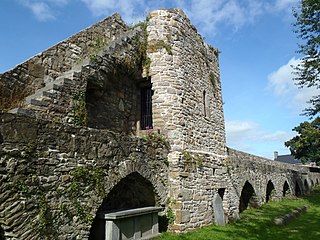 W
WThe Heritage Council is an organisation created by the Irish government to "engage, educate and advocate to develop a wider understanding of the vital contribution that our heritage makes to our social, environmental and economic well-being."
 W
WA Hibernophile is a person who is fond of Irish culture, Irish language and Ireland in general. Its antonym is Hibernophobe. The word originates from "Hibernia", the word used by the ancient Romans to refer to Ireland.
 W
WA high cross or standing cross is a free-standing Christian cross made of stone and often richly decorated. There was a unique Early Medieval tradition in Ireland and Britain of raising large sculpted stone crosses, usually outdoors. These probably developed from earlier traditions using wood, perhaps with metalwork attachments, and earlier pagan Celtic memorial stones; the Pictish stones of Scotland may also have influenced the form. The earliest surviving examples seem to come from the territory of the Anglo-Saxon kingdom of Northumbria, which had been converted to Christianity by Irish missionaries; it remains unclear whether the form first developed in Ireland or Britain.
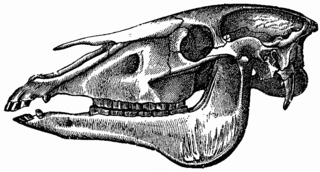 W
WIn Ireland, England, Wales, and the Scandinavian Peninsula, the skulls of horses have been found concealed in the structures of buildings, usually under the foundation or floor. Horse skulls have also been found in buildings in the United States, although in far fewer numbers. As part of the larger folk tradition of concealing objects in structures, horse skulls are related to concealed shoes, dried cats, and witch bottles.
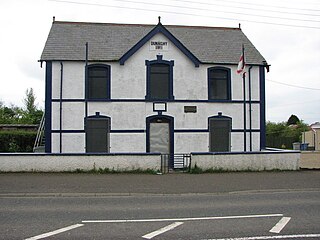 W
WThe Independent Loyal Orange Institution is an offshoot of the Orange Institution, a Protestant fraternal organisation based in Northern Ireland. Initially pro-labour and supportive tenant rights and land reform, in returned over time to a more conservative, unionist position.
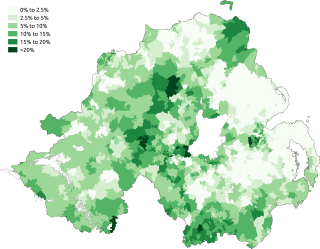 W
WThe Irish language is a recognised minority language in Northern Ireland. The dialect spoken there is known as Ulster Irish. Protection for the Irish language in Northern Ireland stems largely from the European Charter for Regional or Minority Languages.
 W
WIrish Travellers, also known as Pavees or Mincéirs are a traditionally peripatetic ethno-cultural group originating in Ireland.
 W
WItzacon Eire, more popularly known as Itzacon is the premier gaming convention run by the Fantasy and Science Fiction Society (Fansci) of NUI Galway, Ireland.
 W
WIvy Day was formerly observed on October 6 in Ireland, in memory of the prominent nationalist politician Charles Stewart Parnell who died on that date. James Joyce's short story "Ivy Day in the Committee Room" features several Irish politicians who fail to live up to Parnell's memory.
 W
WA jack-o'-lantern is a carved pumpkin, turnip, or other root vegetable lantern, commonly associated with the Halloween holiday. Its name comes from the reported phenomenon of strange lights flickering over peat bogs, called will-o'-the-wisps or jack-o'-lanterns. The name is also tied to the Irish legend of Stingy Jack, a drunkard who bargains with Satan and is doomed to roam the Earth with only a hollowed turnip to light his way.
 W
WThe Jacob's Awards were instituted in December 1962 as the first Irish television awards. Later, they were expanded to include radio. The awards were named after their sponsor, W. & R. Jacob & Co. Ltd., a biscuit manufacturer, and recipients were selected by Ireland's national newspaper television and radio critics. Jacob's Award winners were chosen annually until 1993, when the final awards presentation took place.
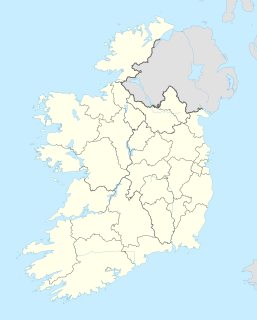 W
WKillamery is a village in County Kilkenny, Ireland. It was the site of a famous monastery under the abbacy of St. Gobban, who died 639 and was buried in the hallowed grounds of St.Fintan of Clonenagh's Abbey, County Laois.
 W
WThere are a number of languages used in Ireland. Since the late eighteenth century, English has been the predominant first language, displacing Irish. A large minority claims some ability to use Irish, and it is the first language for a small percentage of the population.
 W
WLughnasadh or Lughnasa is a Gaelic festival marking the beginning of the harvest season. Historically, it was widely observed throughout Ireland, Scotland and the Isle of Man. In Modern Irish it is called Lúnasa, in Scottish Gaelic: Lùnastal, and in Manx: Luanistyn. Traditionally it is held on 1 August, or about halfway between the summer solstice and autumn equinox. In recent centuries some of the celebrations have been shifted to the Sunday nearest this date.
 W
WIrish music is music that has been created in various genres on the island of Ireland.
 W
WSeán Ó hEinirí, known in English as John Henry, was an Irish seanchaí and a native of Cill Ghallagáin, County Mayo. He is known for his storytelling. He may have been the last monolingual speaker of the Irish language.
 W
WIn Ireland, partitionism refers to views on Irish politics, culture, geography, or history that treat Northern Ireland and the Republic of Ireland as distinct. Partitionists may emphasise the perceived differences between the two jurisdictions and the people who live within them.
 W
WThe Presidential State Car is the official state car of the President of Ireland. It is a 1947 Rolls-Royce Silver Wraith landaulette.
 W
WA pub session is performing music in the setting of a local pub, in which the music-making is intermingled with the consumption of ale, stout, and beer and conversation. Performers sing and play traditional songs and tunes from the Irish, English, Scottish and Manx traditions, using instruments such as the fiddle, accordion, concertina, flute, tin whistle, uilleann pipes, tenor banjo, guitar, and bodhrán. Some sessions have dancing too
 W
WPuck Fair is one of Ireland's oldest fairs. It takes place annually 10–12 August in Killorglin, County Kerry.
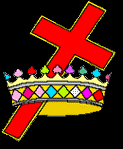 W
WThe Royal Black Institution, the Imperial Grand Black Chapter Of The British Commonwealth, or simply the Black Institution, is a Protestant fraternal society though some scholars[who?] argue it is an Ulster syncretism of ritualistic Freemasonry.
 W
WSaint Patrick's Day, or the Feast of Saint Patrick, is a cultural and religious celebration held on 17 March, the traditional death date of Saint Patrick, the foremost patron saint of Ireland.
 W
WThe Sarajevo Irish Festival is an annual festival held in Sarajevo, Bosnia and Herzegovina that celebrates Irish culture. The festival was established in 2015 and is held for three days around and including St. Patrick's Day. It was founded by Irish expatriates in Bosnia and Herzegovina in cooperation with the Bosnian Ministry of Foreign Affairs and Culture Ireland. The festival hosts Irish theatre companies, screens Irish films and organizes concerts of Irish folk musicians. The festival has hosted numerous Irish artists, filmmakers, theatre directors and musicians such as Conor Horgan, Ailis Ni Riain, Dermot Dunne, Mick Moloney, Chloë Agnew and others.
 W
WA shamrock is a young sprig, used as a symbol of Ireland. Saint Patrick, Ireland's patron saint, is said to have used it as a metaphor for the Christian Holy Trinity. The name shamrock comes from Irish seamróg [ˈʃamˠɾˠoːɡ], which is the diminutive of the Irish word seamair óg and simply means "young clover".
 W
WSheep shearing is the process by which the woollen fleece of a sheep is cut off. The person who removes the sheep's wool is called a shearer. Typically each adult sheep is shorn once each year. The annual shearing most often occurs in a shearing shed, a facility especially designed to process often hundreds and sometimes more than 3,000 sheep per day.
 W
WSheep farming or sheep husbandry is the raising and breeding of domestic sheep. It is a branch of animal husbandry. Sheep are raised principally for their meat, milk, and fiber (wool). They also yield sheepskin and parchment.
 W
WShrove Tuesday is the day before Ash Wednesday, observed in many Christian countries through participating in confession and absolution, the ritual burning of the previous year's Holy Week palms, finalizing one's Lenten sacrifice, as well as eating pancakes and other sweets.
 W
WSouth-West Irish English is a class of broad varieties of English spoken in Ireland's South-West Region. Within Ireland, the varieties are best associated with either the urban working class of the South-West or traditional rural Ireland in general, and they are popularly identified by their specific city or county, such as Cork English, Kerry English, or Limerick English.
 W
WSport in Ireland plays an important role in Irish society. The many sports played and followed in Ireland include Gaelic games, association football, horse racing, show jumping, greyhound racing, basketball, fishing, handball, motorsport, boxing, tennis, hockey, golf, rowing, cricket, and rugby union.
 W
WAn Tóstal was the name for a series of festivals held in Ireland in the 20th Century. Inaugurated in 1953 as a celebration of Irish life, it continued on until 1958 when it died out in most centres except Drumshanbo.
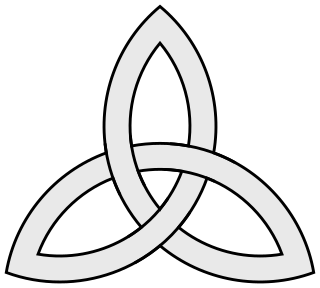 W
WThe triquetra is a triangular figure composed of three interlaced arcs, or (equivalently) three overlapping vesicae piscis lens shapes.
 W
WÚdarás na Gaeltachta, abbreviated UnaG, is a regional state agency which is responsible for the economic, social and cultural development of Irish-speaking (Gaeltacht) regions of Ireland. Its stated purpose is to strengthen the Gaeltacht communities, to increase the quality of life of its community members and facilitate the preservation and extension of the Irish language as the principal language of the region. It gives funding to small local businesses that have to compete with foreign companies.
 W
WA wake is a social gathering associated with death, usually held before a funeral. Traditionally, a wake takes place in the house of the deceased with the body present; however, modern wakes are often performed at a funeral home or another convenient location. A wake is also sometimes held in place of a funeral as a social celebration of the person's life. In the United States and Canada it is synonymous with a viewing. It is often a social rite that highlights the idea that the loss is one of a social group and affects that group as a whole. In the United Kingdom and some other parts of the Commonwealth, where it is not customary to have a public viewing ceremony before the funeral, the term is sometimes used for a gathering held after the funeral.